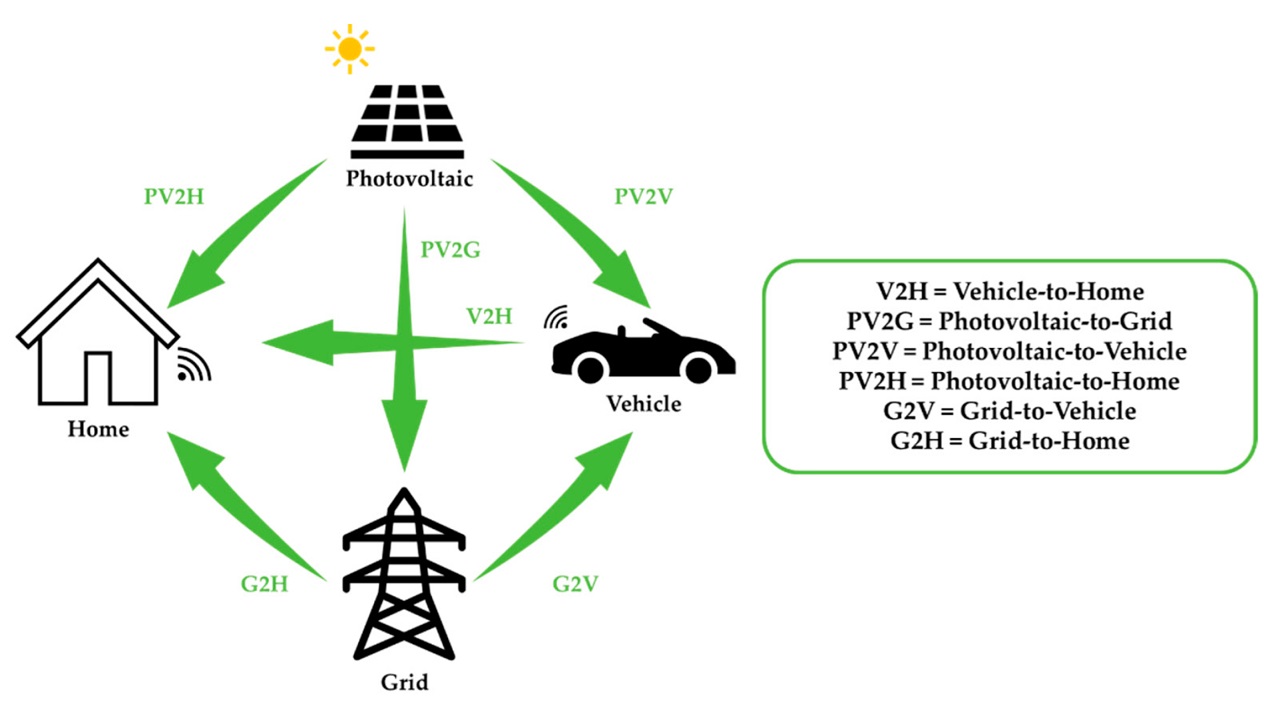AI-eMobility
Transition to a more decentralized energy futureArtificial intelligence (AI) is revolutionizing the electric vehicle (EV) and charging station ecosystem, with a particular focus on Vehicle-to-Grid (V2G), Vehicle-to-Home (V2H) and Virtual Power Plant (VPP) applications. These technologies are transforming the EV user into a “prosumer”, an active producer and consumer of energy. Let’s see how AI fits into this ecosystem.
AI is the engine that enables an advanced EV + EV charger ecosystem, where EVs are not just means of transportation, but essential components of a smart and sustainable energy system. AI-enabled V2G, V2H and VPP applications can transform EV users into active prosumers, capable of positively influencing both their energy balance and the stability of the overall electricity grid, while also facilitating the transition to a more decentralized and renewable energy future.

V2G & V2H
Energy Optimization
AI can manage the flow of energy between electric vehicles and the grid, deciding when it is appropriate to return energy to the grid or when to recharge the vehicle. This process takes into account various factors, such as the price of energy, the level of charge of the vehicle, and the demand for energy on the grid.
Forecasting and Planning
Using machine learning algorithms, AI can predict peaks in energy demand and plan when to use the energy stored in the vehicles. This optimizes the efficiency of V2G and reduces energy costs for users and suppliers.
Integration with Renewable Energy
AI can coordinate the use of energy from renewable sources with V2G, maximizing the use of clean energy and reducing dependence on fossil fuels.
Home Energy Management
AI can monitor home energy consumption and optimize the use of energy stored in the vehicle to power the home. This is especially useful during peak demand or when energy prices are high.
Load Scheduling
AI can schedule the use of appliances based on the energy availability in the vehicle and energy tariffs, reducing costs for the user.
Energy Resilience
In the event of a blackout, AI can intelligently manage the distribution of energy from the vehicle to the home, ensuring that critical functions are powered for as long as needed.
VPP & EV Prosumer
Aggregation and Optimization
AI manages the aggregation of energy resources, optimizing their use to maximize efficiency and profits. AI algorithms can decide when and how much energy to supply to the grid or store, based on predictive supply and demand mechanisms.
Grid Balancing
AI can automatically balance the energy fed into and withdrawn from the grid, maintaining stability and preventing overloads or shortages.
Energy Market Participation
AI enables VPPs to dynamically participate in energy markets, selling energy at times of high demand or purchasing it at low prices to charge vehicle and home batteries.
Profit Optimization
AI can help prosumers maximize profits from selling energy to the grid through V2G or VPP, optimizing the timing and quantity of energy sold.
Integrated Management
AI can manage the entire prosumer energy ecosystem, integrating home solar generation, battery storage, and electric vehicle use, optimizing consumption and reducing costs.
Monitoring and Feedback
Through intelligent dashboards, AI can provide real-time feedback to prosumers, helping them understand their consumption and production patterns and make informed decisions based on objective information.
